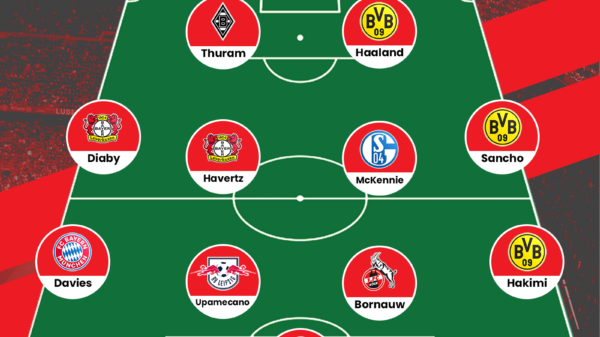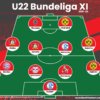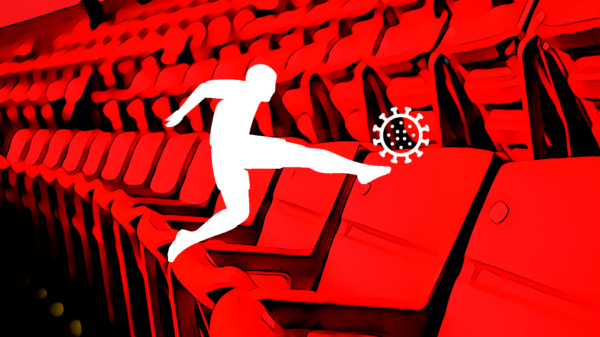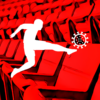Eric Devin writes a detailed tactical analysis about the Champions League game which finished Bayern Munich 2-1 Atletico Madrid.
Line-Ups

Made using Tactical Pad
Bayern Munich (4-1-4-1): Neuer; Lahm, Boateng, Martinez, Alaba; Alonso; Costa (Coman 73′), Muller, Vidal, Ribery; Lewandowski
Atletico Madrid (4-4-2): Oblak; Juanfran, Godin, Gimenez, Filipe Luis; Saul, Gabi, Fernandez (Ferreira Carrasco 46′), Koke (Savic 90 + 2′); Torres, Griezmann (Partey 82′)
BAYERN MUNICH 2-1 ATLETICO MADRID
It is exceedingly rare in football to see both sides leave a match certain that they had got their tactics right. Rarely, if ever, is the result ideal for both sides, especially in knockout football, where there can be only one winner. Tuesday’s encounter at the Allianz Arena, though, might just be the exception that proves the rule.
Both sides employed subtle shifts from the start and throughout the match, setting the stage for a nervy finish that befitted this stage of the Champions’ League. Before sinking our metaphorical teeth into this match, though, a word on the first leg, the result of which (a 1-0 home win for Atletico) greatly informed this clash. Settled by Saul’s sublime goal on 12 minutes, the scoreline truthfully flattered the visitors. In addition to Fernando Torres hitting the post for Atletico, many of Bayern’s starting eleven looked uninspired. Of the three players who were replaced, (Kingsley Coman, Thiago Alcantara, Juan Bernat) none could have any real complaint, as they failed to trouble Saul going forward or put any real pressure on Juanfran.
As a result, most of Bayern’s chances came from outside the box, (see map below) with 2/3 of their shots being taken by the combination of David Alaba, Arturo Vidal and Douglas Costa. As the heat maps of the trio show, there was a distinct lack of presence in the box on Bayern’s part in the first leg in general, something which Guardiola sought to remedy in the return. Taking this change in aim as a starting point, how did the former Barcelona man adapt his side?
While Atletico certainly have a deserved reputation as a defensive force that ranks among the best of all time, they are not without their weak links. As fine as Juanfran and Filipe Luis can be going forward, the demands of Diego Simeone to play in a compact manner at the back mean that when they are forced to be auxiliary center backs, they are sometimes found wanting. To exploit this, Bayern often functioned essentially as a 3-5-2 in possession, Xabi Alonso dropping deeper to help the center backs, Philipp Lahm and David Alaba pushed forward. Given that Franck Ribery and Douglas Costa, the nominal wide players, have a proclivity for cutting inside, that then has the knock-on effect of pushing Arturo Vidal further forward, supporting the two forwards, Robert Lewandowski and Thomas Muller.
Both Muller and Lewandowski have fine goal-scoring records for their club and country, but neither is the most physically imposing, meaning that their battles for aerial supremacy against Diego Godin and Jose Maria Gimenez were only going to have one outcome. Recognizing this, Guardiola played the two at the edges of the area, where they would match up against the aforementioned full backs. Again, while blessed with tireless running and decent positioning, the pair of Atletico players are far from distinguished in the air, and with the center backs staying central to combat the runs of Vidal and Ribery, they were forced to battle with Bayern’s forwards on the margins.
Not only did this tactic exploit a potential weakness on the part of the visitors, it also made the best of the ability of the likes of Alonso and Vidal to play balls over the top, which, combined with crosses from Lahm and Costa meant that Atletico’s defenders had to be on high alert. In the first image below, from early in the match, Bayern have won the ball from Atletico and Costa has delivered a ball in from the far post. With Godin and Gimenez tracking the runs of Muller and Ribery, Juanfran is caught one-on-one with Lewandowski. In this example, the Spaniard manages to get goal-side of the striker and Costa’s ball drifts out for a corner, but a similar tactic freed Vidal to assist Lewandowski for Bayern’s second, the Chilean slinking into the box and beating Filipe Luis, his looping header turned in by the former Dortmund player, as seen in the latter image.
However, it wasn’t only Vidal who showed enterprise in terms of getting involved in the attack. Xabi Alonso doesn’t get about the pitch as he did during his time at Liverpool, but his set piece delivery, range of passing, and positional versatility mean that he can still be a useful player in a top quality team, and this was apparent on the evening as well. With all of Bayern’s center backs having struggled for fitness at various times throughout the season, necessitating at one point the bizarre loan of Serdar Tasci, Alonso has also showed an ability to do a job in that role, often dropping between two recognized center backs to allow one of them to get forward. In the first image below, from the first half, Alonso is Bayern’s deepest outfield player, looking ready to spread play to Boateng, his lack of pace no risk under token pressure from Torres.
The second image, then, shows the result of Alonso’s dropping deeper. Here, Javi Martinez, an imposing presence at 6′ 2″, has drifted forward from defense to provide Atletico with more food for thought. Martinez only won three headers on the night, but two of them were in a position similar to the one he occupies here, another layer of attack for Atletico’s defense to counter. It may seem rather base in the minds of some for Pep Guardiola to resort to a variation of route one football, but were it not for a superb match by Jan Oblak, there were ample chances for Bayern to have triumphed, the German side having done well to find the seams in the visitors’ vaunted defense.
The one issue that could possibly be taken with Guardiola’s approach was that without the directness of Arjen Robben, there was only Franck Ribery as a viable option in terms of running at opposing defenders. The Frenchman has been superb for Bayern since his arrival, but back and ankle problems have limited his availability and effectiveness this season. While he was a consistent menace with the ball at his feet, this movement was mostly along the edges of the pitch, battling against Saul without much in the way of tangible results. There had been some suggestion before the match that he and Costa could switch flanks to add another variation for Bayern, but neither seemed to show much interest in doing so, allowing Alaba and Lahm to provide the lion’s share of width going forward.
As well as Guardiola’s plan worked in the match’s first half, the way in which Simeone changed his tactics to counter the Bayern manager was equally sublime. After failing to fashion any real chances in the first half, the Atletico manager made a change at the interval, replacing Augusto Fernandez with Yannick Ferreira Carrasco. With Raul Garcia having left for Athletic Bilbao in the summer and Tiago a long-term absence due to a broken leg suffered in November, central midfield was a position of little depth for Atletico, and Fernandez arrived from Celta Vigo in January. A title winner under Simeone at River Plate in the pair’s native Argentina, Fernandez offered the same prosaic approach, but was never a threat to stretch Bayern defensively.
Ferreira Carrasco, however, is quite another story. Signed from Monaco as the nominal replacement for Arda Turan, the young Belgian took a while to get settled, battling an ankle injury and match fitness, (at least by Simeone’s standards) and had missed the first leg in Madrid. Deployed here off the bench, the youngster displayed exactly why he was signed, providing a directness and pace that Atletico had sorely missed in the first half and first leg, his ability to stretch play on the counter keeping Lahm and Costa honest. With his introduction, on the left, Saul dropped to a holding role, while Koke moved inside to partner Gabi ahead of them, with the versatile Antoine Griezmann moving to the right wing.
Seen in the image below, not only did the move force Bayern’s fullbacks deeper to guard against the threats of Griezmann and Ferreira Carrasco, but it also moved Koke to a central role which is arguably a better use of his talents. Always capable of doing a job in wide areas, he is also sublime with the ball at his feet, and his presence also forced Bayern’s central defenders to sit a bit deeper as well, forays forward from Boateng and Martinez becoming the exception rather than the rule. Additionally, having Saul in front of the back four in place of Gabi and Fernandez also made for a more mobile screen for Godin and Gimenez.
And, of course, as Griezmann’s goal showed, it made Atletico no less dangerous on the counter. Despite a tense final twenty minutes after Lewandowski’s goal, Atletico still fashioned the odd chance, including a missed penalty by Fernando Torres late on. Thus, despite Guardiola’s superb game plan, once Simeone worked out how to pin back Bayern just a bit more, there was little the Spaniard could do. His introduction of Kingsley Coman for the ineffective Douglas Costa was, aside from Mario Gotze, the only option off the bench. The young Frenchman proved eager, but failed to make any real impact on the match, and while Gotze has shown he can perform on the biggest stage in the past, he has failed to feature with any regularity in the Champions’ League under Guardiola this campaign due to a combination of injury and form.
Much ink has been spilled in the last few days about the away-goals rule which allowed Atletico to progress at the hands of Bayern, but for this writer, the match, and the tie came down simply to tactics and the ability to think in the moment. Guardiola got his spot on, and had the lion’s share of the chances, doing as well as any club have this season in terms of getting at Atletico’s defense. But, his lack of in-match flexibility proved his undoing, as Simeone was able to adapt his system with a minimal number of personnel changes, so too was Guardiola unable to counter those changes. Each manager set himself up for success, but the result of the match, and the tie serves to underscore not just the importance of tactics but how they are applied in real time.
Written by Eric Devin































































